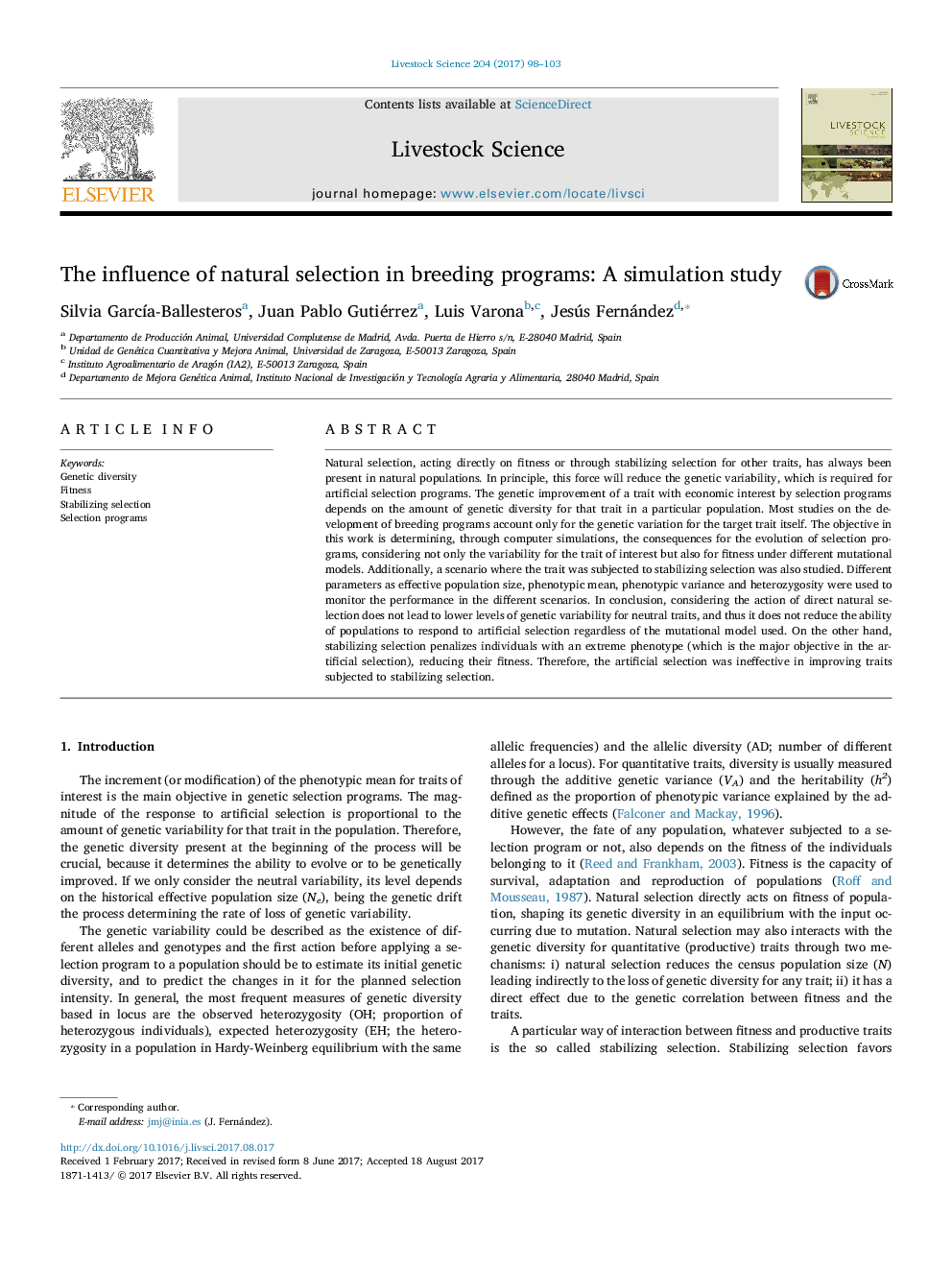ترجمه فارسی عنوان مقاله
تأثیر انتخاب طبیعی در برنامه های پرورش: یک مطالعه شبیه سازی
عنوان انگلیسی
The influence of natural selection in breeding programs: A simulation study
| کد مقاله | سال انتشار | تعداد صفحات مقاله انگلیسی |
|---|---|---|
| 151510 | 2017 | 6 صفحه PDF |
منبع

Publisher : Elsevier - Science Direct (الزویر - ساینس دایرکت)
Journal : Livestock Science, Volume 204, October 2017, Pages 98-103
ترجمه کلمات کلیدی
تنوع ژنتیکی، تناسب اندام، تثبیت انتخاب، برنامه های انتخابی،
کلمات کلیدی انگلیسی
Genetic diversity; Fitness; Stabilizing selection; Selection programs;
ترجمه چکیده
انتخاب طبیعی، به طور مستقیم بر روی تناسب اندام و یا از طریق انتخاب ثبات برای صفات دیگر، همیشه در جمعیت طبیعی موجود است. در اصل، این نیرو، تغییرات ژنتیکی را که برای برنامه های انتخاب مصنوعی مورد نیاز است، کاهش می دهد. بهبود ژنتیکی یک ویژگی با علاقه اقتصادی توسط برنامه های انتخاب، بستگی به میزان تنوع ژنتیکی آن صفات در یک جمعیت خاص دارد. بیشتر مطالعات در زمینه توسعه برنامه های پرورش تنها برای تنوع ژنتیکی برای مشخصه هدف مورد توجه هستند. هدف این کار تعیین شبیه سازی های کامپیوتری، پیامدهای تکامل برنامه های انتخاب است، با توجه به نه تنها تنوع برای ویژگی های مورد علاقه، بلکه همچنین برای تناسب در مدل های مختلف جهش. علاوه بر این، یک سناریو که در آن صفت در معرض انتخاب ثبات قرار گرفته نیز مورد مطالعه قرار گرفت. پارامترهای مختلف به عنوان اندازه موثر جمعیت، میانگین فنوتیپ، واریانس فنوتیپی و هتروزیگوتیسم برای نظارت بر عملکرد در سناریوهای مختلف مورد استفاده قرار گرفت. در نتیجه، با توجه به عمل مستقیم انتخاب طبیعی، منجر به سطوح پایین تر تنوع ژنتیکی صفات خنثی نمی شود و بنابراین توانایی جمعیت برای پاسخ گویی به انتخاب مصنوعی بدون توجه به مدل جهش مورد استفاده را کاهش نمی دهد. از سوی دیگر، تثبیت انتخاب، افرادی را با یک فنوتیپ شدید (که هدف اصلی انتخاب مصنوعی) است، تنزل می دهد. بنابراین انتخاب مصنوعی در بهبود صفات مورد استفاده در انتخاب ثبات بی اثر بود.

